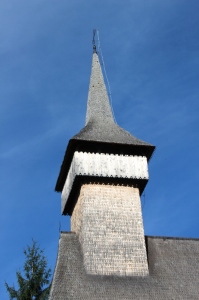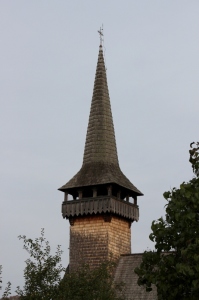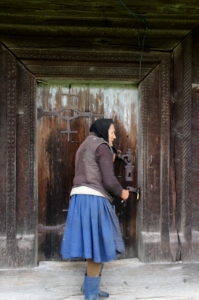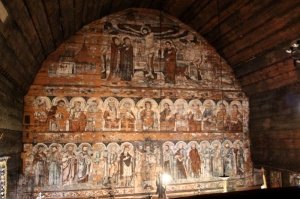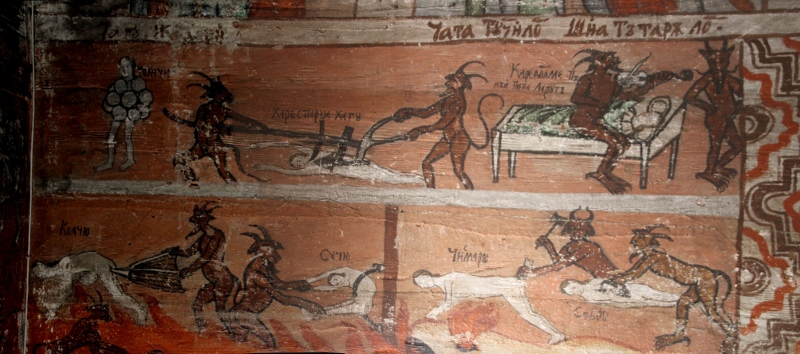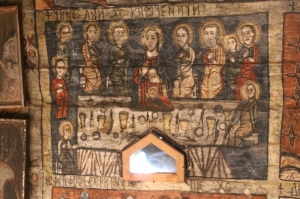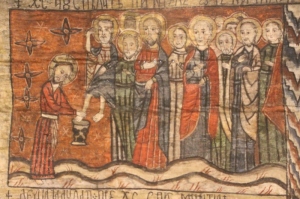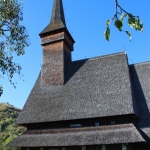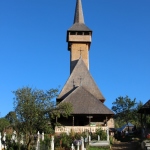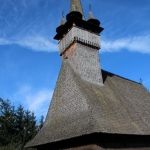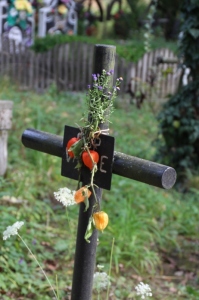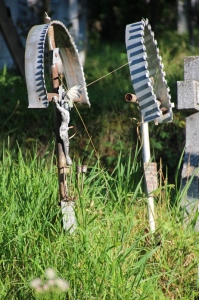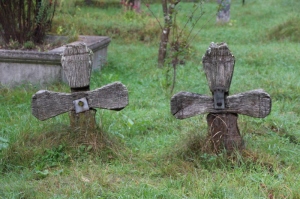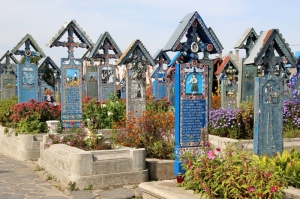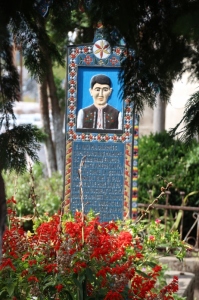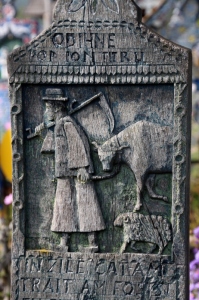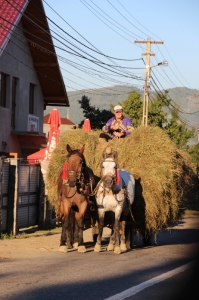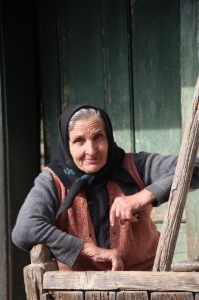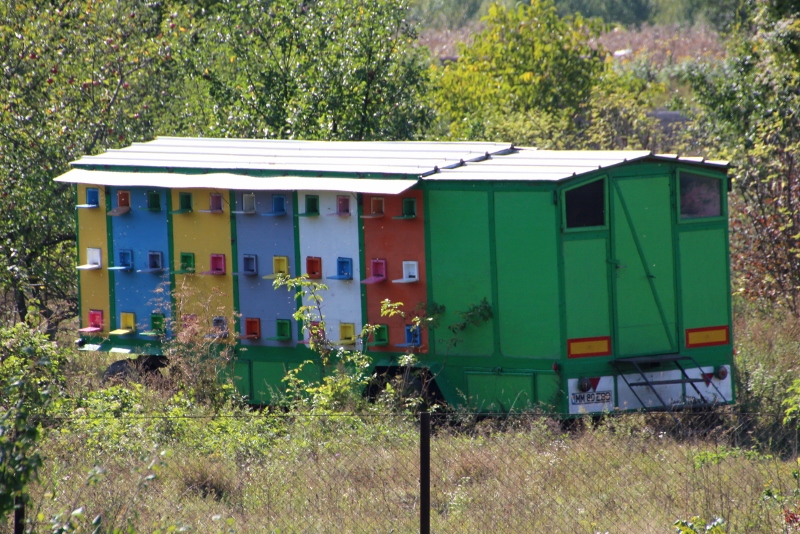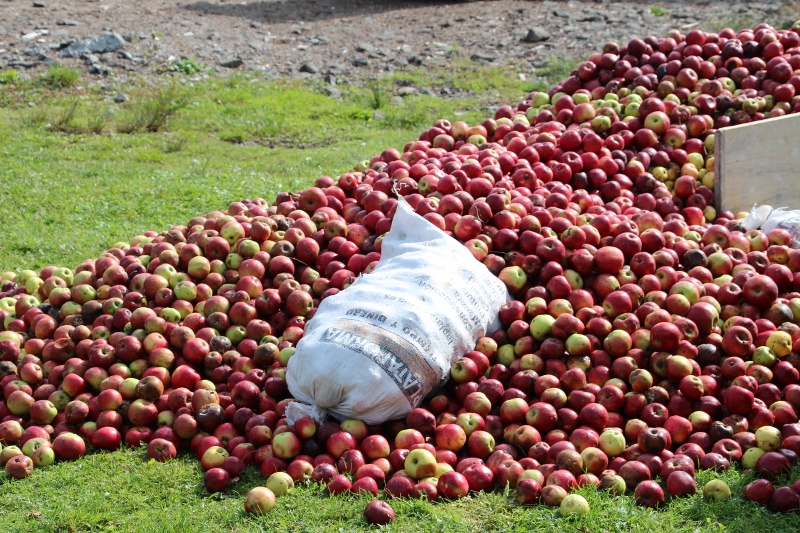Another unique Romanian feature are the steep, wooden churches of Maramures, beautifully decorated inside with frescoes
There are around a hundred wooden churches in Maramures, of which eight are on the UNESCO World Heritage List. We didn’t visit all of them, not only because there is a limit to how many wooden churches one can visit, but also because visiting the churches isn’t as easy as it sounds. For starters, they are closed. Some have a piece of paper with a telephone number, to reach the caretaker, who may, or may not decide to turn up after a call. Others have no indication of where to obtain the key, whatsoever; but asking around often generates enough clues as to on which door to knock, or to which door to call if the yard is being protected by a mean-looking and frantically barking dog. And in most cases, somebody turns up eventually; and waiting is often worthwhile, the reward being a look inside the churches.
Many of the churches have been brilliantly decorated, as befits orthodox churches. Although along the benches some of the frescoes have been eroded, by people sitting against them, the Biblical scenes on the walls and the ceilings – no different subject-matter than in Bucovina, of course – are often very well executed, in a naïve style, and still quite bright.
The churches we entered were those in Ieud, Poienile Izei, Desesti and Budesti, as well as the less expressive, but perhaps more authentic church of Botiza (by following the links you’ll find some additional photos).
The churches come with cemeteries, as most churches do. Remarkable is the variety of material used for the crosses, perhaps also a reflection of economic hardship. There are simple wooden crosses, elaborately carved wooden crosses, a few stone crosses, but mostly, people have opted for metal crosses, sometimes decorated with a small sculpture, or a semi-arc, at other times no more than a simple metal cross.
That it doesn’t need to be this way, is demonstrated in the village of Sapanta, close to the Ukrainian border. Few cemeteries will be more colourful than the Cimitirul Vesel here, which translate into Merry Cemetery. Villagers have created a tradition of mildly mocking the deceased, through poems or images added to the crosses, which themselves are bright blue. The poems are in Romanian, of course, but the images are quite expressive: a house wife, a soldier, a farmer, a musician. A car accident, showing how somebody got to his end. It is the first cemetery where I had to pay an entrance fee, including extra for my camera, it is also the first cemetery where I saw lines of tourist stalls outside, selling socks and pots and tablecloths. Obviously, this is more than a cemetery alone, it is a major tourist attraction. Which cannot be said of the Jewish cemetery, a few hundred meters back. It is fenced, and the gate is closed, I suppose to avoid desecration. The cemetery is in memory to the thousand Jews deported in the war, and a stark reminder of the anti-Semitism that dominated this part of Romania. Not every cemetery is merry.
It is our last day in Romania, tomorrow we start the long drive home, to The Netherlands. As I get out of the car, to take some pictures of the hay stacks that form another characteristic of this country, a horse-drawn cart appears, also full of hay. The guy on top asks me, in good Dutch, if I am from The Netherlands. It turns out that he has been working there for a couple of years, and now he is back. On top of the hay, on top of his cart. Showing quite a bit of flexibility. Isn’t it great, this free traffic of people among European countries?
Next: the last entry, looking back, a reflection on Romania
